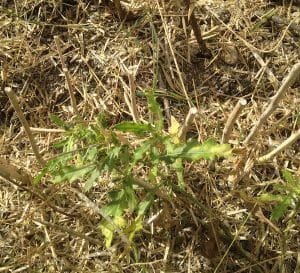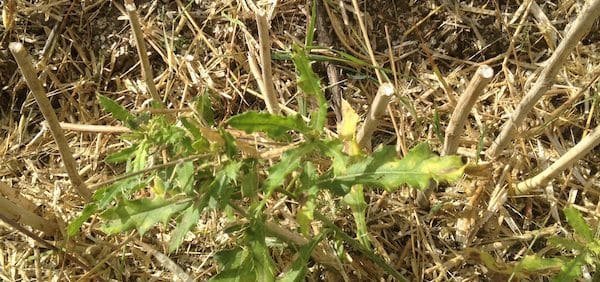With the possibility of a few weeks between harvest and freeze up, farmers in Western Canada might be looking at ways to make good use of this time. Given the economic benefits that zero-tillage has provided many farms across the Prairies, tillage has become the fall job of last resort. Here are some other fall jobs to consider:
Collect soil samples for nutrient analysis. Ideally, growers will use an appropriate fertilizer rate for each field based on soil nutrient reserves and yield goals. This is part of a farm’s 4R nutrient stewardship plan. Fall is good time to take samples. Sampling after soil has cooled to less than 10°C can provide a close reflection of nitrogen levels in the spring prior to planting, and allow for more accurate fall fertilizer purchases. The Canola Encyclopedia has more on sampling techniques and strategies.
Count stems per square foot to help with seed planning. Average stem counts for each canola field harvested this year can put yield, quality and harvest date results in perspective and help with seeding rate decisions in 2021. A Canola Watch article explains why and how to count.
While counting stems, check them for verticillium stripe. Symptoms for this disease, which is relatively unknown for many farmers and agronomists in Western Canada, are really obvious this time of year. Infected stems will be peeling and microsclerotia will be evident underneath that outer layer of stem skin. How to identify verticillium stripe. Canola Watch has an article on other diseases you might find with post-harvest scouting.

Control perennial and winter annual weeds. Warm fall weather has perennial and winter annual weeds getting bushier and building up the strength of their root systems. That could make them that much harder to control next year, which is a good reason to use pleasant fall days to spray them now. Timing and targets for fall weed control.
Apply nutrients. Fall-applied nutrients can relieve some of the time pressure in spring. Deep banding in the fall can protect nitrogen from losses, but check that soil conditions allow for a good sealing of the band. The Canola Encyclopedia section on nitrogen has good tips in the “Timing” section. Canola Digest has an article with 4R messages as they relate to nitrogen and phosphorus timing. Manitoba Agriculture has tips on inhibitors and when to use them.
Harrow to spread residue uniformly. Harrowing can be useful to spread straw in the fall or early spring if errors in the combine’s performance are evident. When using harrows, watch the level of aggressiveness as harrows can cause soil erosion and disturbance, which will degrade the seedbed and dry it out. It can also rip out standing stubble, which is a beneficial crop residue component that helps prevent soil erosion. Standing stubble is also off the soil surface, which allows for optimal performance of drill openers. Harrowing can also promote germination of annual weeds, like volunteer canola, which reduces the seedbank. Research from the University of Manitoba found that early fall disturbance, shortly after canola harvest, promotes fall germination of seed lost during canola harvest. These seedlings winterkill, thereby reducing the volunteer canola population in the subsequent spring by ~50%.
